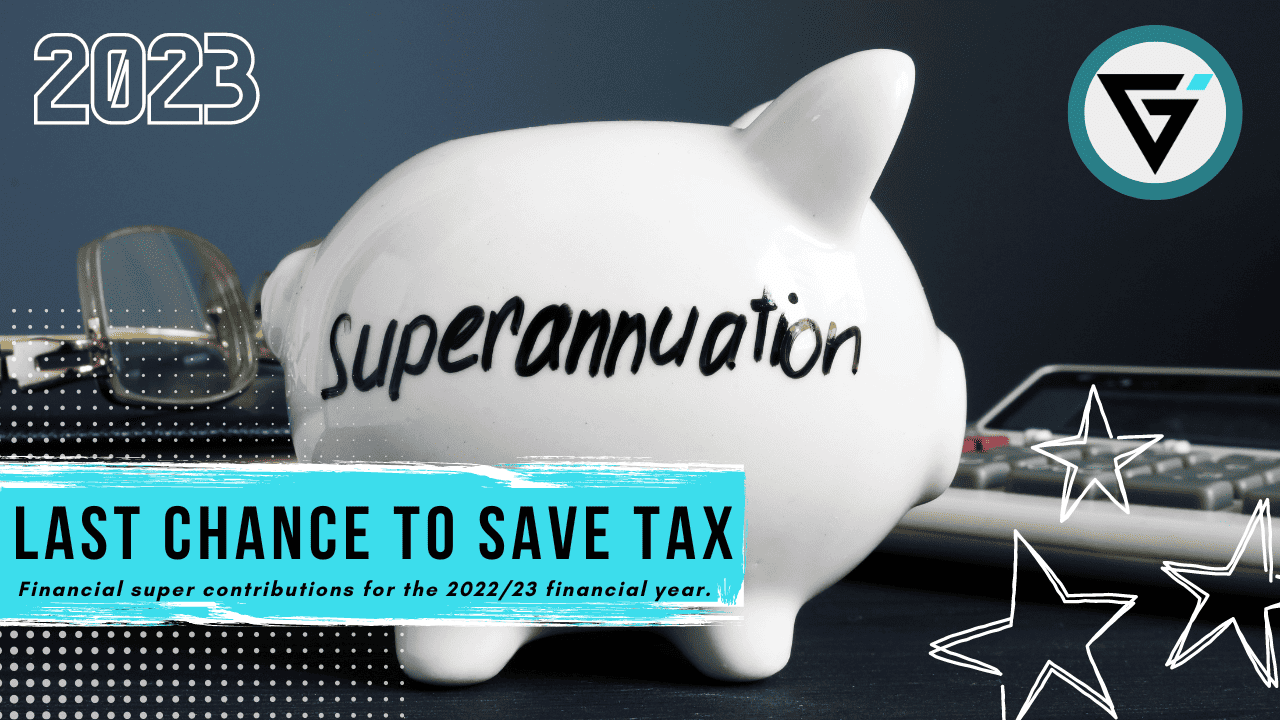If you are living and working in Australia, then there is no doubt that you are somewhat familiar with superannuation. It is retirement saving system that was thrust upon us back in 1991 when the government introduced the Superannuation Guarantee to force more people to save for their own retirement rather than rely on government support.
Since then, the system has grown considerably and today the total funds in superannuation sits at a whopping $2.9 trillion.
I have said it before, and I will say it again, I am a big fan of the superannuation system. If you understand how it works and you play by the rules, it is the most tax effective vehicle we have to invest through. So today I want to run you through the basics of exactly what super is and how it works.
Is super an investment?
No, super is not an investment, super is a structure. The assets you hold in the structure are the investments. It is important you understand this concept to truly grasp how super works.
Most people are under the illusion that investment options inside super are limited and this is simply not the case. The only real limitation put on your investments is done so through the super fund which you use. I will touch on this more when we discuss the different types of super funds available.
Think of super similar to a trust or a company. It is a separate legal entity that has it’s own tax rules and compliance obligations. Provided you operate within the rules, your investment options are just about endless.
Choosing the right fund
When it comes to choosing the right super fund, there is a wide range to pick from. To simplify this for you, let’s classify your options into two broad categories; public offer funds and self-managed super funds (SMSFs).
A public offer fund is a super fund that is open to the public to join as a member. This includes both industry and retail super funds. When looking into which fund is appropriate for you, you should consider the following:
- What investments the fund offers;
- The fees;
- The reporting capabilities of the fund; and
- The type of beneficiary nominations offered by the fund.
You’re probably thinking “Brad you left insurance off that list?”. Well, that is because you can shop your insurance around and if you want to learn more about this refer to my previous Blog titled “Structuring Life Insurance | Super vs Personal Name | The misconception about insurance in super”
For most people, there will be a public offer fund available to suit their needs. Certain funds will allow you to invest directly in shares, managed funds, term deposits, annuities, ETFs, LICs, mFunds and more. However, if you want to invest in property, or another more unique asset classes, then you are going to need an SMSF.
An SMSF is basically a super fund that you run yourself. This involves setting up your own fund whereby you are the trustee of the fund and you’re responsible for managing and maintaining that fund.
There are a wide range of benefits and disadvantages to SMSFs and if you would like to learn more about that please refer to my blog entitled “Should you have a self-managed super fund (SMSF)?”.
Contributing into super
Broadly speaking, there are two types of contributions you can make into superannuation; concessional and non-concessional contributions.
A concessional contribution is a pre-tax contribution and has an annual cap limit of $25,000 in the 2020/21 financial year. For typical taxed super funds, these contributions are taxed upon entry into the fund at the super rate of 15%. Employer superannuation guarantee contributions and any salary sacrifice contribution will form part of your concessional cap limit.
You also have the option to make a personal member contribution and have it treated as a concessional contribution by lodging a notice of intention to claim form. By doing so, you will be able to claim the amount contributed as a tax deduction however, your super fund pays 15% contributions tax on the way into your fund.
Think about that for a second – what other vehicle will give you a personal tax deduction for investing through it? None that I know of! This is a massive benefit of utilising the super system.
A non-concessional contribution is an after-tax contribution and has an annual cap limit of $100,000 in the 2020/21 financial year. This contribution is not taxed upon entry into your fund and you are not eligible to claim a tax deduction by making the contribution. If you are below age 65, you may also be eligible to trigger the bring-forward rule which allows you to bring-forward 2 years of non-concessional contributions allowing a maximum deposit of $300,000 in a single year.
Under the age of 67, you are eligible to make both concessional and non-concessional contributions to your superannuation regardless of your working status (increased from age 65 as at 1 July 2020). If you are over 67 at the start of the financial year and under age 75, you will need to meet a work test in order to be eligible to contribute. That is, you must be working a minimum of 40 hours over a consecutive 30 day period.
Other points you might want to note about making contributions to super:
- There are some untaxed superannuation funds out there like GESB West State Super which have different rules around concessional contributions, i.e. instead of having an annual cap limit they have a lifetime limit and contributions tax is withdrawn upon leaving the fund not upon making the contribution.
- If you earn above $250,000, you will incur an additional 15% Division 293 tax on concessional contributions.
- You may be able to use any unused concessional contribution cap limit from the 2018/19 financial year onwards as a catch-up concessional contribution. Unused amount can be carried forward for up to 5 years before they expire. This is only available to those who have less than $500,000 in super.
- Currently the bring-forward rule is only available to people under the age of 65. There is legislation in the pipeline to bring this age up to 67.
- Dependant on your income, you may be eligible for government incentives to contribute to super. This includes the government co-contribution, eligible spouse contribution and the low income super tax offset.
- There are other contributions that don’t form part of your cap limits. An example of this is the small business CGT retirement exemption and the downsizer contribution.
Accumulation phase vs pension phase.
There are two phases to superannuation; accumulation phase and pension phase.
Your super will be in accumulation phase when you are contributing to it. During accumulation phase your super fund has a 15% tax rate. This means your fund pays tax at a maximum rate of 15% on all investment earnings and certain types of contributions (more on this later). Any expenses within the fund (e.g. insurance premiums) or franking credits can be used to reduce the amount of tax payable in accumulation phase.
An obvious benefit of super is that the 15% tax rate is often significantly lower than your marginal tax rate which can be as high as 45% plus medicare levy.
Once you have met preservation age, you can then choose to switch your super fund to pension phase. The type of pension you can switch into will depend on your age and working status.
If you have met preservation age but are below age 65 and still working, you will be limited to a transition to retirement (TTR) pension. This is a restricted form of an account-based pension as you can only withdraw a maximum of 10% of your fund balance each financial year and the tax treatment within a TTR pension is the same as when in accumulation phase.
Typically, you would only start a TTR pension if you wanted to reduce working hours and needed to supplement your income from pension drawings or if you wanted to boost your income in order to salary sacrifice more into super.
The other type of pension is a full account-based pension. If you have met preservation age and have retired from the workforce, then you will have access to a full account-based pension. This is where super, as a structure, becomes really impressive.
An account-based pension is a 0% tax entity. This means you pay no tax on any income or capital gain made within the fund – it is a perfectly legal tax haven. If your investments generate franking credits, they are rebated directly into your super fund.
When it comes to the tax treatment of withdraws from a pension, it is the same tax treatment for both a TTR pension and an account-based pension. That is, if you are over 60 all pension payments will be tax free. If you are below age 60, there will be tax payable on the taxable portion of your pension payment with a 15% tax offset.
Other points you might want to note about pension accounts include:
- There is a minimum drawdown amount that you must take each financial year;
- You cannot contribute to a pension account once it has been commenced;
- If you started your pension prior to 1 July 2015 it will have different Centrelink treatment to pensions commenced after this date; and
- There is a transfer balance cap limit which restricts how much can be transferred into a pension account. The current cap limit is $1.6 million however this is increasing to $1.7 million from 1 July 2021.
What happens to your super when you die?
If you were to pass away, there will be a superannuation death benefit which is made up of your super balance plus any potential Life insurance proceeds from policies owned through super. Who the benefit goes to is going to be dictated by your nomination of beneficiary.
It is important to remember that superannuation is a non-estate asset and therefore it is important you have the right nomination of beneficiary in place. You can opt to send it to your estate by listing your legal personal representative as your nominated beneficiary.
The tax treatment of death benefits and the types of nominations you can make is a complex area of advice. If you would like more information on it, I discuss this in detail in my blog entitled “Payment of death benefits from superannuation | Estate planning in Australia”.
Final thoughts
Hopefully that gives you a good idea about what superannuation is and how it works. As you can see, there are complexities when it comes to managing your super which you need to be aware of.
In my opinion, every person, no matter their age, should be taking an interest in their super. It is the best tax structure we have available to us and, if you’re not utilising your super properly, you are not maximising your wealth potential.










